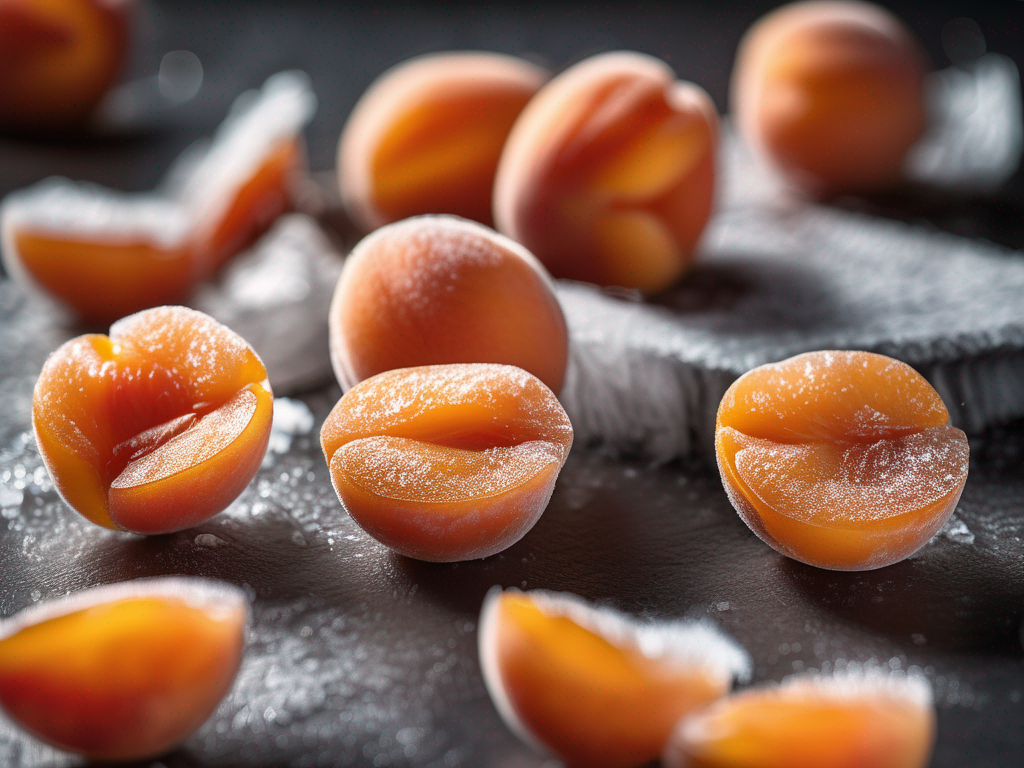
When to Discard Frozen Apricots that have Turned Mushy and Slimy
Get Your Free Food Safety Cheat Sheet
30 most common foods with instant answers. Print it and stick it on your fridge—completely free!
When to Discard Frozen Apricots that have Turned Mushy and Slimy
Frozen apricots are a convenient and versatile ingredient to have on hand for smoothies, baked goods, and other recipes. However, like any frozen food, they can degrade in quality over time. If you open your freezer and find that your frozen apricots have turned mushy and slimy, you may be wondering if they are still safe to eat. In this blog post, we will discuss when to discard frozen apricots that have gone bad and provide you with practical tips on food safety and storage. (Frozen apricots)
Understanding the Signs of Spoiled Frozen Apricots
When frozen apricots start to deteriorate, they may exhibit various signs of spoilage. Here are some common indicators that your frozen apricots have gone bad:
Visual Changes:
- Mushy Texture: If the apricots have lost their firmness and feel mushy to the touch, it is a sign that they are no longer in good condition.
- Slimy Coating: A slimy or slippery film on the surface of the apricots indicates bacterial growth and spoilage.
Aromatic Changes:
- Off Odor: Spoiled apricots may emit a sour, musty, or off-putting odor that is different from their usual sweet fragrance.
Taste and Flavor:
- Off Flavor: If the apricots taste sour, fermented, or generally unpleasant, it is a clear sign that they have deteriorated.
Safety Guidelines for Frozen Apricots
When it comes to food safety, it is essential to follow guidelines to prevent foodborne illness. Here are some safety tips for handling frozen apricots:
Proper Storage:
- Freezer Temperature: Keep your freezer at 0°F (-18°C) or below to maintain the quality of frozen apricots.
- Airtight Packaging: Store frozen apricots in airtight containers or freezer bags to prevent freezer burn and contamination.
- Labeling and Dating: Label the packaging with the date of freezing to track the storage time.
Thawing and Refreezing:
- Thawing: Thaw frozen apricots in the refrigerator or under running cold water to prevent bacterial growth.
- Avoid Refreezing: Once apricots have been thawed, it is not recommended to refreeze them, as this can compromise their texture and safety.
Hygiene Practices:
- Clean Surfaces: Ensure that surfaces and utensils used to handle frozen apricots are clean and sanitized to prevent cross-contamination.
- Handwashing: Wash your hands thoroughly before and after handling frozen apricots to maintain hygiene.
When to Discard Frozen Apricots
If you notice that your frozen apricots have turned mushy and slimy, it is best to err on the side of caution and discard them. Here are the key reasons why you should not consume spoiled frozen apricots:
- Risk of Foodborne Illness: Bacterial growth on mushy and slimy apricots can lead to foodborne illnesses such as food poisoning.
- Loss of Flavor and Quality: Spoiled apricots will not only taste unpleasant but also lack the nutritional value and quality of fresh or properly frozen fruit.
Conclusion
In conclusion, frozen apricots that have turned mushy and slimy should be discarded to avoid the risk of foodborne illness and maintain food safety. By understanding the signs of spoilage, following proper storage guidelines, and knowing when to discard frozen apricots, you can ensure that your frozen fruit remains safe and enjoyable to consume. Remember, when in doubt, throw it out!
For more information on [frozen apricots](/food/frozen apricots) and other food safety tips, stay tuned to our blog for future updates. Stay safe and enjoy your frozen treats responsibly! (Frozen apricots)
Related Posts
Here are some other articles you might find helpful:
- The Ultimate Guide to Properly Storing Frozen Apricots in the Freezer
- How Long Can You Keep Frozen Apricots in the Freezer Before They Go Bad?
- Thawing Frozen Apricots: Best Practices for Optimal Taste and Texture
- Proper Storage and Preservation of Fresh Apricots Whole
- Freezing Apricots: A Guide to Preserving Freshness
Authoritative Food Safety References
These agencies and university labs inform every tip and health precaution we publish.
USDA FoodKeeper – Cold Storage Guidelines
Official refrigerator, freezer, and pantry timelines maintained by the U.S. Department of Agriculture.
Visit USDA FoodKeeperFDA Produce Safety Rule & Grower Guidance
Field-to-fridge handling practices that prevent contamination of fruits, vegetables, and leafy greens.
Visit FDA Produce SafetyCDC Foodborne Illness Prevention Hub
Surveillance-backed guidance on pathogens, symptoms, and steps to reduce foodborne illness risk.
Visit CDC Food SafetyUC Davis Postharvest Technology Center
University research detailing optimal storage atmospheres for produce after harvest.
Visit UC Davis PostharvestPenn State Extension – Home Food Preservation & Safety
Peer-reviewed extension bulletins on safe canning, chilling, and reheating practices.
Visit Penn State ExtensionGet Your Free Food Safety Cheat Sheet
30 most common foods with instant answers. Print it and stick it on your fridge—completely free! Want more? Upgrade to the complete guide with 70+ foods.
Scan your food directly and get instant safety info using our AI-powered camera feature.